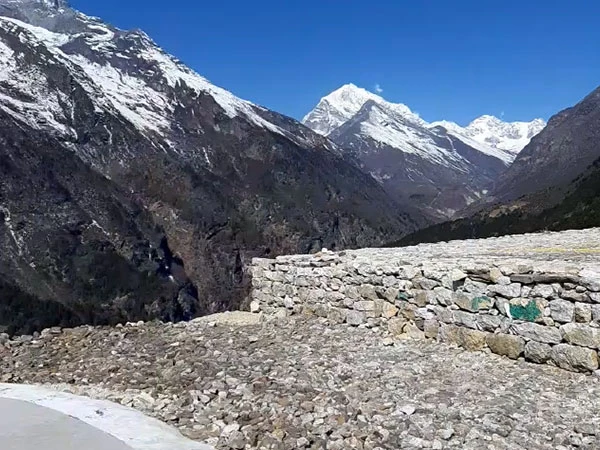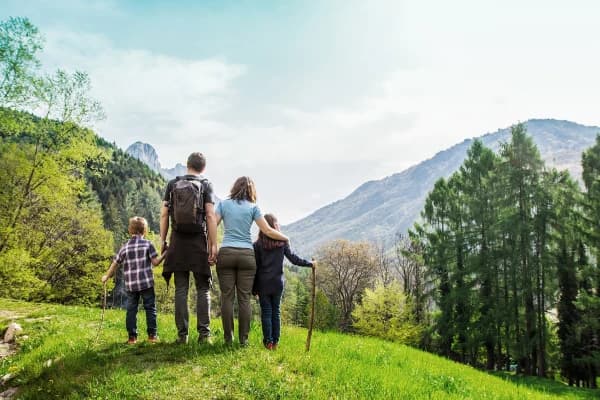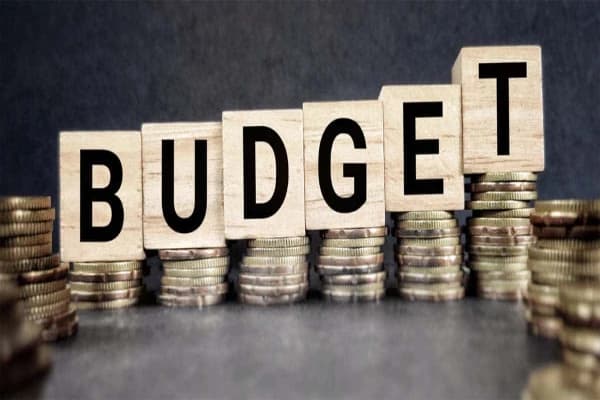Dashain is Nepal's largest festival, also called Vijaya Dashami, that lasts more than 15 days in Ashwin (September-October) and is the most significant and prominent festival in Nepal to celebrate the victory of goddess Durga over the evil demon Mahishasura, denoting the victory of goodness over evil.
The most beautiful aspect about Dashain is that it brings a very special essence of deep spirituality associated with ancestors and happiness of cultural practices of humanity, along with connecting with family.
Whilst Dashain is observed, the beautiful country of Nepal also has recognised by kite-flying competitions, colourful bamboo swings called "ping", colourful card games and community fairs around the country.
Dashain in 2025 starts with Ghatasthapana on September 22, 2025 and ends with Kojagrat Purnima on October 6, 2025. The main Vijaya Dashami (Tika Day) will be celebrated on October 8, 2025.
One of the most important rituals from the whole community celebrations is that elders give tika and jamara (barley shoots), and that is always lovely, emotional and a time for generations to come together. Eating and sharing food is a primary focus of the celebrations - sel roti, khasi ko masu, aloo-tama and all of the other amazing local treats.
For foreign tourists and travellers to Nepal, you will have a totally different and enriched experience that you won't find anywhere, if you visit Nepal during Dashain. The weather should be great, with clear skies, comfortable temperatures, chances of seeing the mountains, and ideal trekking, along with cultural sites to explore.
For most Nepalis, they return to their hometowns to celebrate the Dashain festival, and as a result, the cities will be quieter, and the villages (if you get to some) will be more lively and exciting. You might even be invited into the homes of children to view, listen, and experience the rituals, hospitality, and community atmosphere.
If you time your trip to Nepal during Dashain, you are not just seeing some traditions and rituals of the festival, you are entering into the very essence of a life way of the Nepalese people.
Understanding the Dashain Festival- The Biggest Festival in Nepal
| Year | Date | Day of Week | Festival Day | Auspicious Tika Time |
| 2025 | Sept 22 | Monday | Ghatasthapana (Day 1) | Morning sadharan—all day |
| 2025 | Sept 29 | Monday | Phulpati (Day 7) | - |
| 2025 | Sept 30 | Tuesday | Maha Ashtami (Day 8) | - |
| 2025 | October 1 | Wednesday | Maha Navami (Day 9) | - |
| 2025 | October 2 | Thursday | Vijaya Dashami (Day 10) | ~9:30 AM–11:30 AM (astrologically determined; “auspicious window” described) |
| 2025 | October 3 | Friday | Ekadashi (Day 11) | - |
| 2025 | October 4 | Saturday | Dwadashi (Day 12) | - |
| 2025 | October 6 | Monday | Kojagrat Purnima (Day 15) | - |
Dashain is celebrated across Nepal with great enthusiasm. It is, by far, the biggest and longest festival in Nepal, lasting a total of 15 days.
Dashain usually falls between the last week of September to mid-October. The calendar year and dates of Dashain are based on the lunar calendar. In 2025, Dashain will take place from September 27 - October 11.
For the tourists who come from all around the world, experiencing Nepal during Dashain defines a deeper experience of culture from the visual reality of the Dashain festival.
The puja ceremonies that are performed, the families coming together, children flying kites, families looking for ping (swing hain), the fabulous food - goat meat, sel roti or rice pudding, not to mention all the temples having a special ceremonial event, and villages ringing through these traditional experiences.
It's nice to see how people take a break and reconnect with their cultural roots, as government offices, schools, and many businesses are closed for Dashain. Trekkers will also get to experience nearly deserted trails and a nearly peaceful trekking experience. If you have the time to visit Nepal in the Fall, trekking during Dashain is the best mix of culture and nature.
Why is Dashain celebrated in Nepal?
- Triumph of Good over Evil: It symbolizes the slaughter of demon Mahishasura by the Goddess Durga (which symbolizes the triumph of good over evil). For some Hindus it symbolizes Raja Rama’s triumph over Ravana.
- Religious Worship of Shakti / Durga: Worshippers honour many things by worshipping each of the nine forms of Durga over nine days, and devote the majority of their time to prayers, offerings, and rituals such as Ghatasthapana (Sowing of Jamara).
- Honour Family ties / and give Sankalpa: Elders bless younger family members by putting Tika (rice, yogurt and vermilion) and Jamara in the hairs of younger relatives and give a dakshina (finance gift), and essentially tie family ties.
- It is Harvest season with beautiful weather: Dashain is after the monsoons and after the harvest, so the puja signifies beautiful weather and time for relaxation, which promotes travelling and festivities to celebrate the occasion of Dashain and remember family.
How is The Biggest Festival Dashain, Celebrated in Nepal?
The 15-day Dashain – the most significant Hindu festival in Nepal – is composed of worship and religious activities. Families begin their family Dashain celebration during the Ghatasthapana when the sacred pot is placed on the ground and the barley seeds are sown, in which Jamara (sacred grass) grows to symbolise the metaphorical planting or seeding of festive family celebrations in their community.
These Dashain festive celebrations continue to happen while worshippers perform offering with flowers, fruits, and animal sacrifices to the Goddess Durga.
The three days of Mahaastami and Mahanavami, when prayers and animal sacrifice are at their highest, are the times when worshippers plead to the Goddess Durga to provide power and protection.
On Phoolpati, all masses of flowers and sacred materials are bundled together in a box and then transported home, after a grand parade and festivities to complete the event.
The most significant day of the festival, Vijayadashami, is when knowledgeable elders (generally grandparents) take tika (a mixture of yogurt, rice, and vermilion) and Jamara, and smear by the eyebrow on their younger family members while wishing for wealth and prosperity in this life and the next.
As people went home for meal preparations, food was shared with family, kites were flown, and gift and present exchanging took place.
On Kojagrat Purnima, prayers and vigils are celebrated to finish off Dashain. Dashain brings happiness, lifted spirits, and family reunion throughout Nepal.
What does Dashain-tika symbolise?
Dashain Tika is an action that represents many blessings, and is an abundance of love and caring within the familial partners. Tika, a blend of rice (akshata), yogurt (dahi), and/or vermilion (sindoor/or abir), is not just a dot mark on the forehead - it is an auspicious representation of wishes, hopes, and values at both an individual and family level.
Rice
Rice represents prosperity, wealth and abundance. The food is not merely sustenance; it is life and the source of strength. Rice has many rich purposes, but when it is used in the Tika ceremony, it represents our relationship to nature and also a desire or prayer for a plentiful harvest. The whole community hopes to have an abundance of food, happiness and wealth for the entire year.
Yogurt
Yogurt is a representation of cleanliness and the hidden power to be calm. Because of its nature, it is believed that the application of this cooling and supplying effect from yogurt will help one to have peace and a clear mind in times of difficulty. The use of yogurt during the Dashain Tika is thus an indication of the fair and good life that makes one decide not to deviate from the right path and keep their mind always in a state of calm.
Vermillion
Vermillion, a powder of bright red colour, characterises the power of the goddess Durga as well as the power of her holiness. Besides life, it also symbolises the love of family. The concept of "blood ties" is, therefore, the main idea that comes along while interpreting the passing of red colour through all the family members. The use of red powder is thus considered as protection; hence, asking the goddess of safety and solving all the problems and achieving success in all the good things is part of the ritual.
What are the 15 days of Dashain?
Day 1: Ghatasthapana
The first day of Dashain is known as Ghatasthapana. This marks the ceremonial sowing of barley seeds called Jamara.
On that day, a sacred pot (kalash) filled with holy water is placed in a prayer room. The pot and the barley seeds are representations of Goddess Durga in the house, which is being prepared for her blessings. The Jamara will be kept in the dark, receiving care so it can grow into yellow grass, which will eventually be used in the ceremony to bless folks.
Days 2 to 6: Durga Puja and rituals
During these five days, prayers that worship Goddess Durga will happen in her various forms. Daily worship, offerings, prayers and lighting oil lamps will be offered for protection, strength and prosperity.
During this time, the Jamara will grow, and families can either choose to fast or perform special rituals, which are based on differing traditions.
Day 7: Phulpati
Phulpati is a big ceremonial event that bundles plant-based natural materials like banana stalks, plants of sugarcane plants, Jamara, and flowers offered for worship, into a package called phulpati. The Phulpati is made known publicly before being taken to revered ceremonial locations. The Phulpati symbolises peace, prosperity, and blessings from the Gods.
Day 8: Maha Ashtami
This is the day when followers of the goddess Durga worship her most terrifying and fierce form, Kali. The followers will worship for religious purposes and will most often provide animal sacrifices - buffalo, goat, chicken, etc.- to worship Durga, to receive blessings and to protect themselves from evil. It is a serious day accompanied by the huge feasts and gaiety of the family.
Day 9: Maha Navami
Maha Navami is the day that people also worship tools, vehicles and weapons in the form of the goddess, who represents people's protection in their daily life as well as their livelihood and means of living. Some people will also sacrifice animals and perform special puja's, to ask that they will be safe and employable for the year that follows.
Day 10: Vijaya Dashami
The 'Dashain' festival's most important and biggest day is Vijaya Dashami, which is the Tika day. Tika is the red mixture of rice, yogurt and some vermilion, which is plastered on the foreheads of small children and Jamara on other children and adults. Tika is to bless the children/adults with best wishes for health, happiness and plenty, and blessings are given after placing the Tika on each child/head.
The Tika process, where Tika is put on the forehead, is full of the intention of establishing and showing respect, creating family bonds, and having fun. The elders will also give small children and females a monetary gift (called Dakshina or cash) as part of the Tika process.
Days 11 to 14: Receiving Tika and Visiting Family
Days 11 to 14 are simply families visiting each other by receiving Tika and Jamara and blessings. These are days of family resolution, family bonding and relationship development, eating food and giving and receiving gifts and fun family celebrations.
The Actual Story Behind Why Dashain Is Called the “Victory of Good Over Evil”
The Dasain legend, called "Victory of Good Over Evil", is about a demon named Mahishasur who was in conflict with Goddess Durga. The gods in Hinduism (Vishnu, Shiva and Brahma) called for Durga as only women is able to defeat Mahishasur. The gods needed to be concerned as Mahishasur had overtaken heaven and was threatening to overthrow the gods too.
The gods granted their powers to Durga, knowing that only she could defeat Mahishasur. Each god had given Durga powers, Vishnu gave Durga a chakra, Shiva gave her a trident, and Indra gave her thunderbolts. Durga then rode a tiger to confront Mahishasur. When Mahishasur saw Durga he tried to dodge the fight by asking for her hand in marriage.
This angered Durga, who reminded Mahishasur that she belonged to Lord Mahadev (Shiva). Durga asked Mahishasur to leave heaven, but when he did not she fought him and his army and defeated them.
This battle with the shape-shifting Mahishasur lasted nine days. He was ultimately defeated on the tenth day. Durga cut off Mahishasur's head with her chakra, and the gods were able to reclaim heaven. Dashain is a celebration of light over darkness, and good over evil.
The story, which also happens to be the last referenced in the Markandeya Purana, is an ancient reminder of the everlasting struggle and triumph for good.
Mysore, a city in India, is thought to have been named after this legend, and is the place of the Chamundeshwari Temple, which is purported to be where Durga made her victory over Mahishasur.
Is Dashain Festival related to the Famous Ramayana?
Dashain, Nepal's longest festival at 15 days, is linked to 1 aspect of the epic Ramayana, but there is another ancient story that is the renowned mythological basis for Dashain related to goddess Durga and Mahishasur.
Dashain is also inseparably linked to the Ramayana. According to Hindu tradition, Lord Ram (or Ramchandra) is considered an avatar of Vishnu and invoked the blessings of Durga before he battled the demon king Ravana, who had abducted his wife Sita. With the assistance of Durga, he defeated Ravana, and the victory is celebrated on Vijaya Dashami, the last day of Dashain.
Why is animal sacrifice in Dashain?- The story behind
Animal sacrifices are conducted during Dashain on Maha Ashtami (the 8th day) and Maha Navami (the 9th day) as part of a worship play of Goddess Durga (and some of her fearsome forms like Kali or Bhawani). Sacrificing animals in a worship play is seen as an offering of animal passions (anger, lust, ignorance) in humans to the goddess, who, in the myth, destroys the buffalo-demon Mahishasura.
When followers sacrifice livestock and other sacrificial animals, they see themselves as purging sin, "getting" divine blessing from the goddess, and achieving divine protection and prosperity. Sacrifices are often described as an offering of liberation of the animal soul by priests, after having carefully engaged in a practice called parsinu, a type of ritual consent, which also provides an ecological solution to the issue of overpopulation of human domesticated animals.
At palace sites, typically the Taleju Temple at Hanuman Dhoka, mass slaughter (typically by public arms or state, here, the Guthi Sansthan) usually involves hundreds of goats and buffaloes sacrificed at royal courtyards for religious functions. At the same time, the symbolic functions of the state are also fulfilled in the process of sacrifice.
Mostly the sacrificed animals are uncastrated he-goats and he-buffaloes. Still, it may also include sheep, pigs, chickens, ducks (sometimes even the pigeon.
- The national temples, and agencies as well, will provide dozens and dozens of goats, buffaloes and ducks. For example in Kathmandu Valley alone for mass rituals the acting agency has 162 Buffaloes, 187 goats and several dozen ducks.
- At Rajadevi Temple, Janakpur, on Ashtami each year, approximately 15000-16000 goats are sacrificed.
Which god is worshipped in Dashain?
Navadurga
The first nine days of Navaratri are each dedicated to one of the Navadurga, the nine most powerful forms of the Goddess Durga. The names are the Spiritual journey of the Goddess through the representation of various attributes like penance, protection, power, and virtue.
- Shailaputri (Day 1, Ghatasthapana) – The one who is just like the mountain symbolises strength and a kind of devotional psychology that is rooted.
- Brahmacharini (Day 2) – An uncompromising form of an ascetic who is solid and disciplined in gaining spiritual wisdom.
- Chandraghanta (Day 3) – The character who had a half-moon on the head represented the grace and marital harmony.
- Kushmanda (Day 4) – The shining performer of cosmic energy who is considered to be the source of light and life for the universe.
- Skandamata (Day 5) – The mother of Kartikeya (Skanda), who supplies joy, peace, and maternal protection.
- Katyayani (Day 6) – The form of a warlike female who is called upon to get rid of evil (like Mahishasura); thus, it is the energy of Jupiter.
- Kalaratri (Day 7) – The dark, destructive form that eradicates fear and ignorance; therefore, it stands for Saturn’s change of power.
- Mahagauri (Day 8) – She is the one who symbolises purity and spiritual serenity and is the one who forgives and grants wishes.
- Siddhidhatri (Day 9, Maha Navami) – The one who gives the divine powers (siddhis) and is the very essence of the divine energy.
- Goddess Durga (Day 10, Bijaya Dashami): The tenth day marks the celebration of Durga’s victory over the devil, the buffalo demon Mahishasura.
Vishwakarma (Maha Navami)
Vishwakarma is also worshiped along with durga on the 9th day by people from the industrial and artisan sectors.
The things that are used in daily life, machines, vehicles, and instruments, must be honoured to seek their protection and success.
Taleju Bhawani (Day 9)
The Malla dynasty of Nepal’s royal goddess, who is a tantric form of Durga, only on Maha Navami are her temple doors open and sacrifices in her name are offered for divine protection.
Goddess Lakshmi (Day 15, Kojagrat Purnima)
On the last day of the festival, people worship Lakshmi, the Goddess of Wealth, and they do that by staying up all night and being devoted to her for her blessings and great withheld rewards.
How to Wish Happy Dashain in the Nepali Language?
दशैंको शुभकामना!
Dashain-ko shubhakamana!
(Happy Dashain)
**विजया दशमीको हार्दिक मंगलमय शुभकामना!**
Vijaya Dashamī-ko hārdik maṅgalmay shubhākāmana!
(Heartfelt auspicious wishes for Vijaya Dashami)
**दशैं महोत्सवको उपलक्ष्यमा सबैलाई शुभकामना!**
Dashain mahotsav‑ko upalakṣyāmā sabailai shubhākāmana
(Best wishes to everyone on the celebration of Dashain)
Dashain ko subhakamana haruma sabailai!
(Warm and inclusive wishes for a Happy Dashain to all!)
Dashain badai maa hardik maṅgalmay
(Heartfelt and auspicious blessings for the grand Dashain!)
**शान्ति, खुशी, समृद्धि तथा उत्तरोत्तर प्रगतिको मंगलमय शुभकामना – दशैं joyous!**
Śānti, khushī, samriddhi tathā uttaro‑uttar pragati‑ko maṅgalmay shubhākāmana – Dashain joyous
(Peace, happiness, prosperity, and continuous progress – joyous Dashain!)
“Mwohni “ The Dashain Festival of Newar Community
In the Newar community in the Kathmandu Valley, Dashain is referred to as Mohani Nakha (मोहनी नखा), and this festival is an important festival within the blend of Hindu and Buddhist traditions and is similar but also has its practices and relative deities that people worship.
The festival lasts for 15 days. There are a number of traditional processes through which, during the Dashain celebration, the Newars worship the Astamatrika goddesses. However, they are a group of eight deities, which shows capital power and protection.
The eight goddesses, Mahaganesh, and Kumari are important in the Newar Dashain festival because they provide a spiritual practice that is distinct from people who adhere to either of the faiths. Consider, for instance, Bhaktapur, where the Khadga Jatra begins on Vijaya Dashami, where the family sacrifices vegetables to deities with a khagda (a scimitar). This is also similar, seen with the use of tantras in the worship of the goddess.
One of the special things about Mohani Nakha is that it includes the growing and worshipping of Jamara (barley shoots), or Nal Swa as they are called in Nepal Bhasa. Thus, Newar families are supposed to plant Jamara on the first day of the festival.
For the following days, the family can take care of and water the Jamara, and in some cases, pray over the Jamara. When the family later uses the Jamara, it represents the nurturing and care of the power of the divine in their house.
What activities are done during Dashain?
Flying Kites
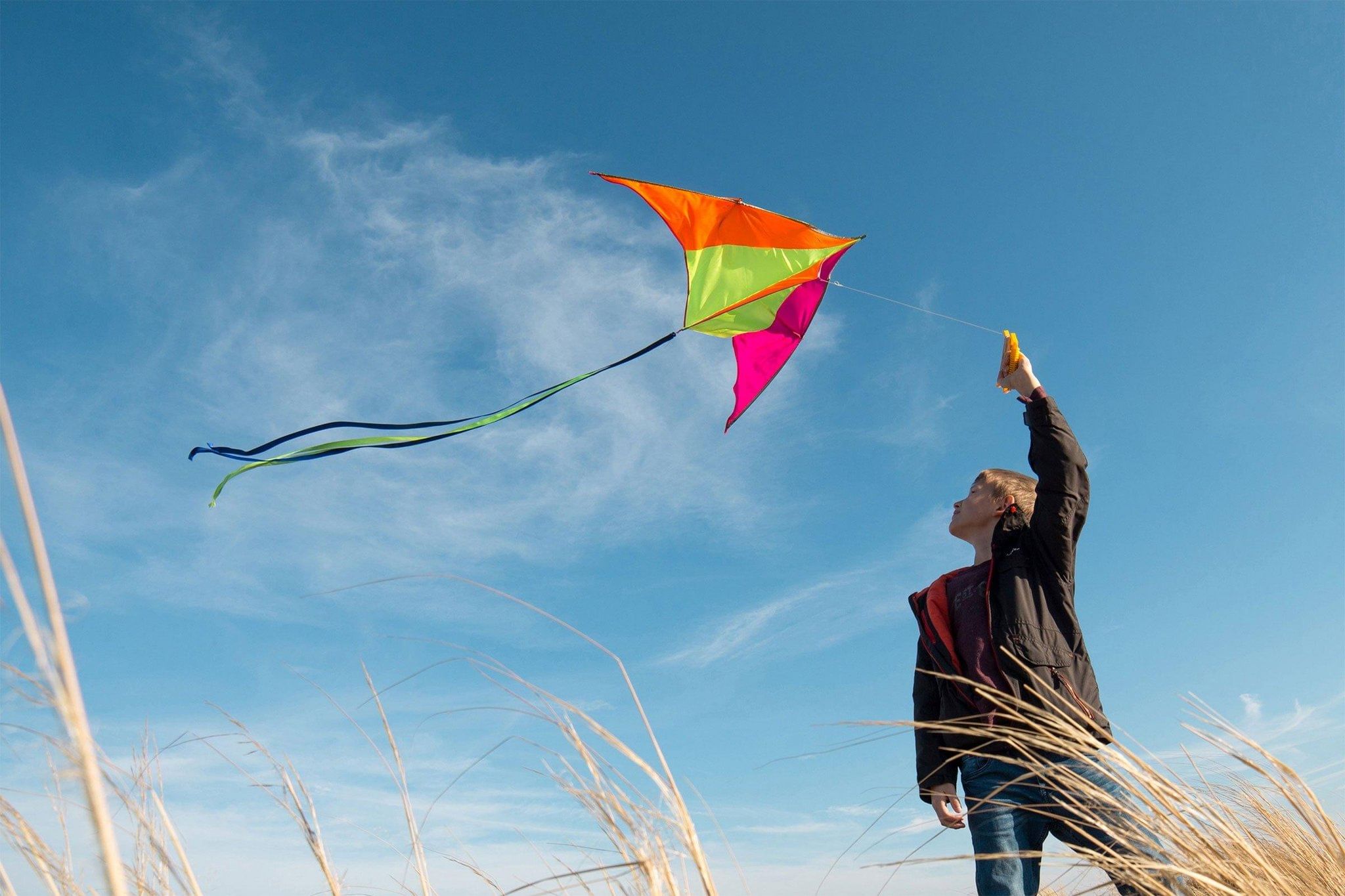
Colourful kites also adorn the crisp blue fall skies from the beginning of Ghatasthapana till the end of the festival. People come together to do this on the rooftops or in the fields.
Kite-flying is one of the traditional games that has been continued and developed among children from generation to generation. Win doesn’t simply cut the others’ string using sharp manja, but also shouts “changā chet!” loudly to visually show that he/she has won. It is believed that flying kites sends a message to the gods, ending the end of monsoon rain and gaining freedom.
Playing Cards and Traditional Games
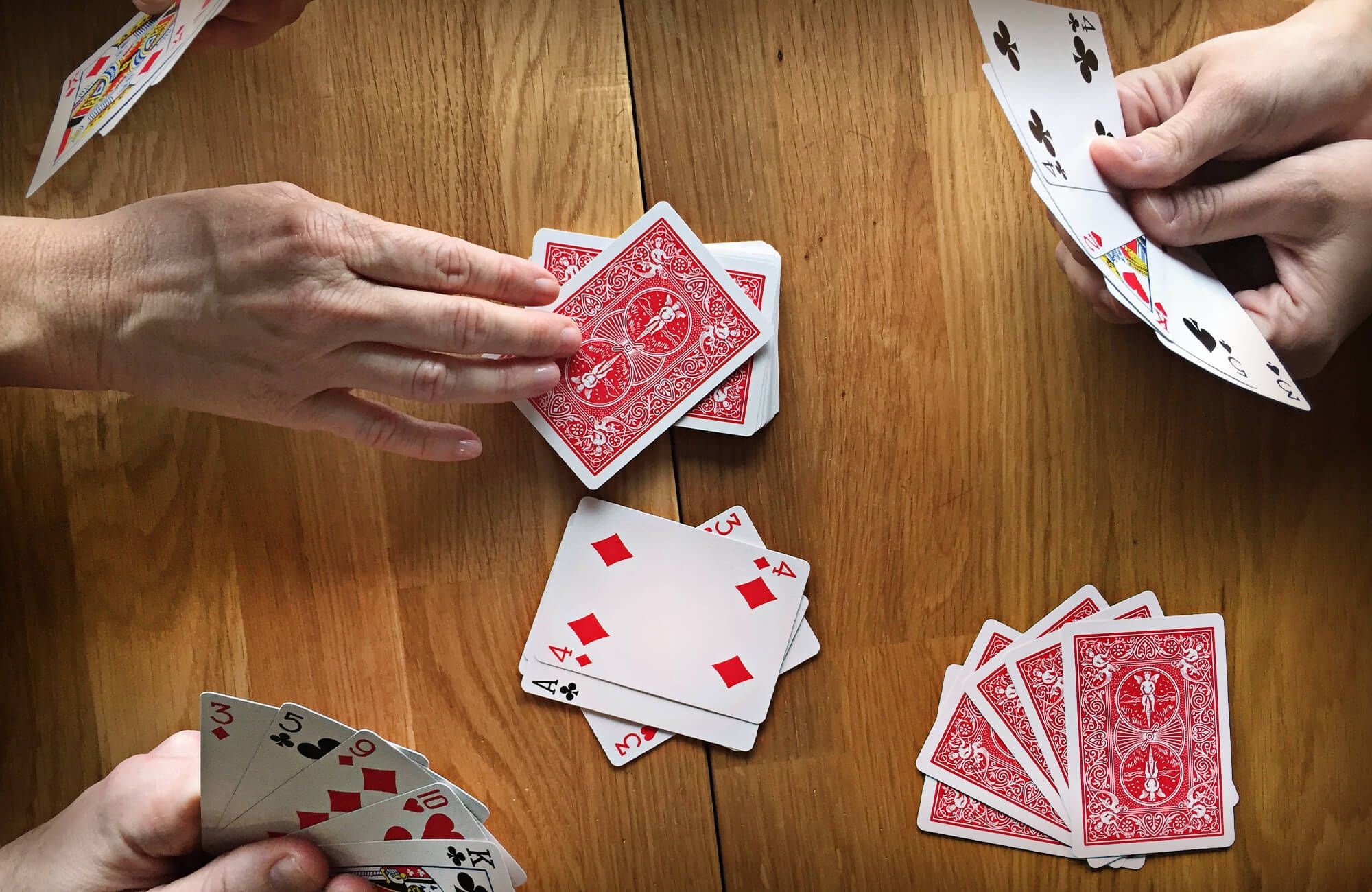
Dashain is also a period when card games and local pastimes are very popular, especially when families gather for a long holiday period. The game called “Marriage” (together with Jhyap and Flash) is most commonly played with lots of decks in hand.
These simple games of competition and sharing encourage playfulness and understanding among players. Some of the rural communities have continued with their cultural and traditional heritage by keeping the festival times as the ones to play their traditional games, like the one called Dandi Biyo or Chungi. Besides nostalgia, it is pleasurable when it comes to gathering times.
Traditional Bamboo Swings – Linge Ping
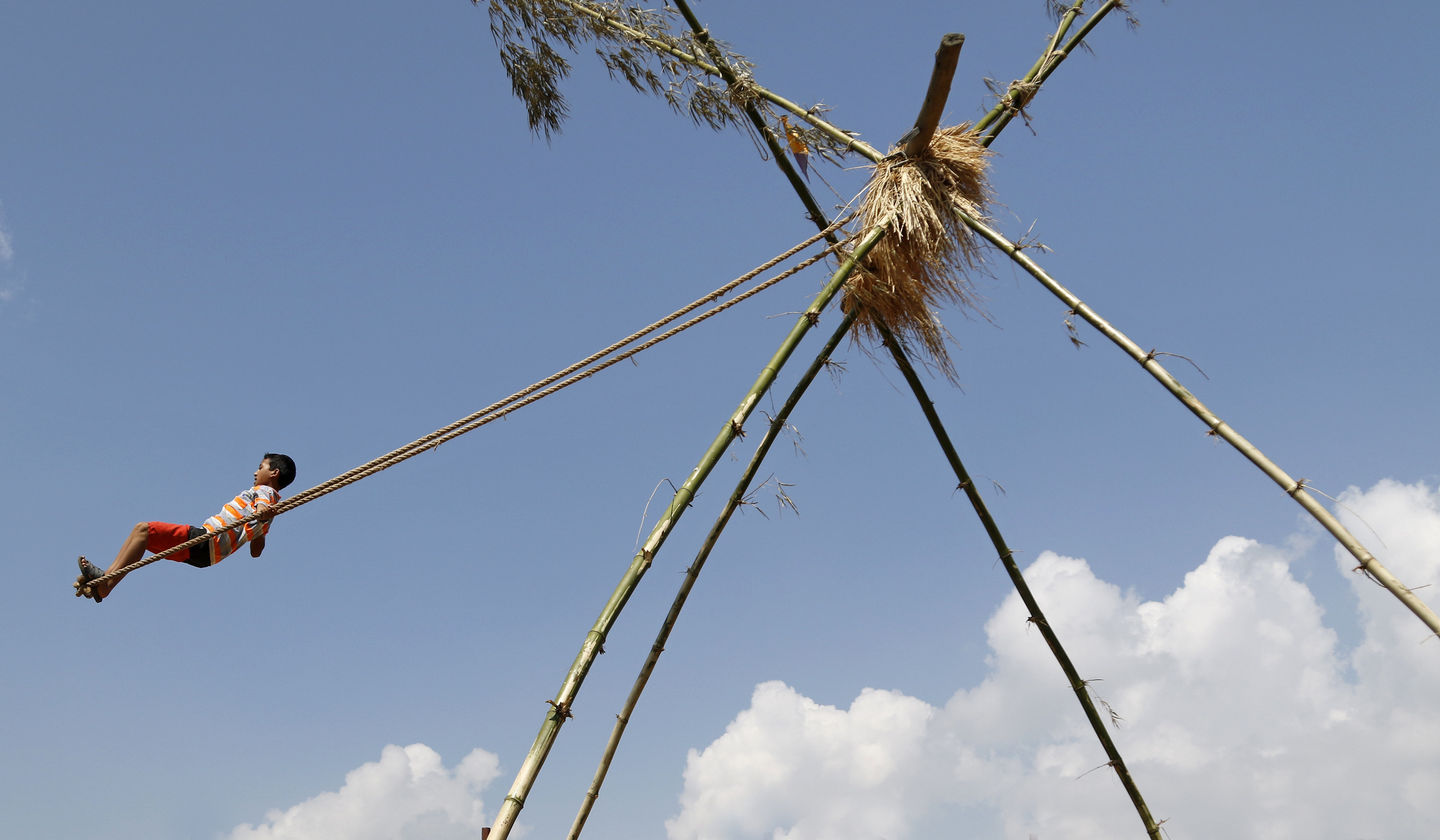
People have traditionally called the ping, which is made from bamboo, the most commonly used locally for making swings. Among the various types, Linge Ping—the swing shaped like a Shiva Linga built from tall bamboo poles—is especially prized.
In those places that are tight on space and where the community space is shared, residents therefore turn the open spaces into playgrounds and erect such swings, which are often 12–16 feet high, in village squares, etc. According to some, the yearly celebration of Dashain is the only time when one should play on this swing leaving every bond from the earth behind.
Wearing and Buying New Clothes
Dashain is also a time of renewal and rebirth, and what renews and signals rebirth more than the wearing of new clothes? It is customary for children, young adults, and adults to buy new clothes for Dashain. In fact, in the villages, even the very poorest families buy new clothes for Dashain out of necessity. Shops of every type across all strata of society become busy giving discounts or running promotions as the festival nears. In fact, shopping is festive and even riotous during the weeks prior to Dashain.
Making and Enjoying Non‑Vegetarian Feasts
Food plays a vital role in Dashain. Many families will be preparing or consuming non-vegetarian items; mainly mutton or buffalo curry, goat meat and sel roti (traditional round-shaped fried rice doughnut) is very typical for families. Some of the rituals, particularly on Maha Ashtami and Navami, involve the act of sacrificing some type of animal as a means of appeasing the goddess. Festivals and rituals bring many visitors to temples (mostly Hanuman Dhoka in Kathmandu), where ritual and animal sacrifice take place, followed by feasting/dining and talking, which marks the transformation of the festival from a ritual into a communal act of food abundance and sharing.
Community Fairs and Cultural Performances
Throughout the Dashain festival fairs, many villages and towns will have fairs with fun games and activities, food vending stalls, simple Ferris wheels, and folk performances for music and dancing and cultural shows. In some places, but more so with the Tharu and Magar, their informal folk dances may depict a story of victory, coming together, and culture, mainly Sakhiya Nach, Lathi Nach, and Maruni, if available, in an open courtyard. The dance part of Dashain celebrates community, and the informal, cumulative dance made by the community celebrates Nepal's diversity and ethnic harmony.
Famous Must Visit Dashain Festival Holiday Destinations in Nepal as a Foreigner
Kathmandu
During Dashain, Kathmandu will be a bustling city of religious significance, ceremonies, decorations, and festivities. Visitors will be able to see world-famous places like Pashupatinath and Swayambhunath Temples, and dance traditions in the local Sikali or Khokana Jatra. They will shop in endless local colourful markets alive with energy.
The Taleju Temple is normally not open to the public; however, this exceptionally sacred temple opens only for a short time for Dashain, so travelers will have an experience of a cultural and religious opportunity. Along with countless elements of live music, fairs, and tasty Nepali food, and for these reasons, travelers to Kathmandu will have a fully immersive experience during this extravagant and sacred festival.
Everest Base Camp
What a rare experience to celebrate Dashain at Everest Base Camp! Foreign trekkers witnessing the local Sherpas and other communities around Everest celebrating Dashain: prayer flags, the coming together of families and friends, and incredible hospitality. To be at Base Camp: well-dressed, receiving our daily dose of culture and natural beauty, a trekking experience which occurs in few places anywhere in the world.
We are enveloped in the joy of food and a celebratory feast, as the magnificent, towering presence of the mountains surrounding Base Camp, the iconic trek we have been a part of turns into a unique day celebrating Dashain, as both the Nepalese culture and the view from our leg of the journey yoke together for an unforgettable Dashain experience.
Annapurna Base Camp
Annapurna Base Camp is alive with local and international trekkers during Dashain. Trekking in the frozen foothills of the Himalayas provides not only stunning sunrises and incredible views of the 360-degree mountains, but you will also have the opportunity to see and participate in the festivities of local villagers, celebrating Dashain. Visitors will see families in local dress, blessings and puja ceremonies, and others celebrating with trekkers and locals in teahouses. The unique combination of events, scenery, and Nepalese culture and experiences makes a genuine place for a Dashain experience.
Manaslu Circuit
The Manaslu Circuit is also known for its unblemished beauty and lingering traditions of culture during Dashain. During this trek, trekkers pass through outlying lazy villages which are adorned and filled with music and prayers. This trek is quieter with many fewer trekkers, and foreign trekkers can share the festival with the Gurung and Tibetan Buddhist communities, who are unfailingly welcoming to tourists participating in their rituals, pujas, and family celebrations. This trek is guaranteed to provide vistas of the Himalayas and trekking through outlying villages, it will provide the finest experience of the spiritual and cultural life of the Nepalese, during the most.
Final Say
Dashain is the biggest festival for Nepalese in Nepal, celebrated with enthusiasm along with traditions passed down through generations. Trekking in Dashain with Ammonite Adventure allows you to appreciate the scenic landscapes of Nepal in the autumn, the clear skies, and the mild weather of Nepal during the season.
With Ammonite Adventure' local guides, you will understand and experience all components of a cultural Dashain celebration, including tika and jamara blessings. Ammonite Adventure Treks will guarantee you an organised trek experience, no matter whether you trek in Everest, Annapurna or in Kathmandu, where we can provide your cultural tour in all the heritage sites and surrounding areas, ensuring you have a memorable experience.
Celebrate Dashain while immersing yourself in the culture and beauty of Nepal's landscape, especially during the peak season. Please book your Dashain trek and tour with us today to experience your own adventure stories and festive experiences.



